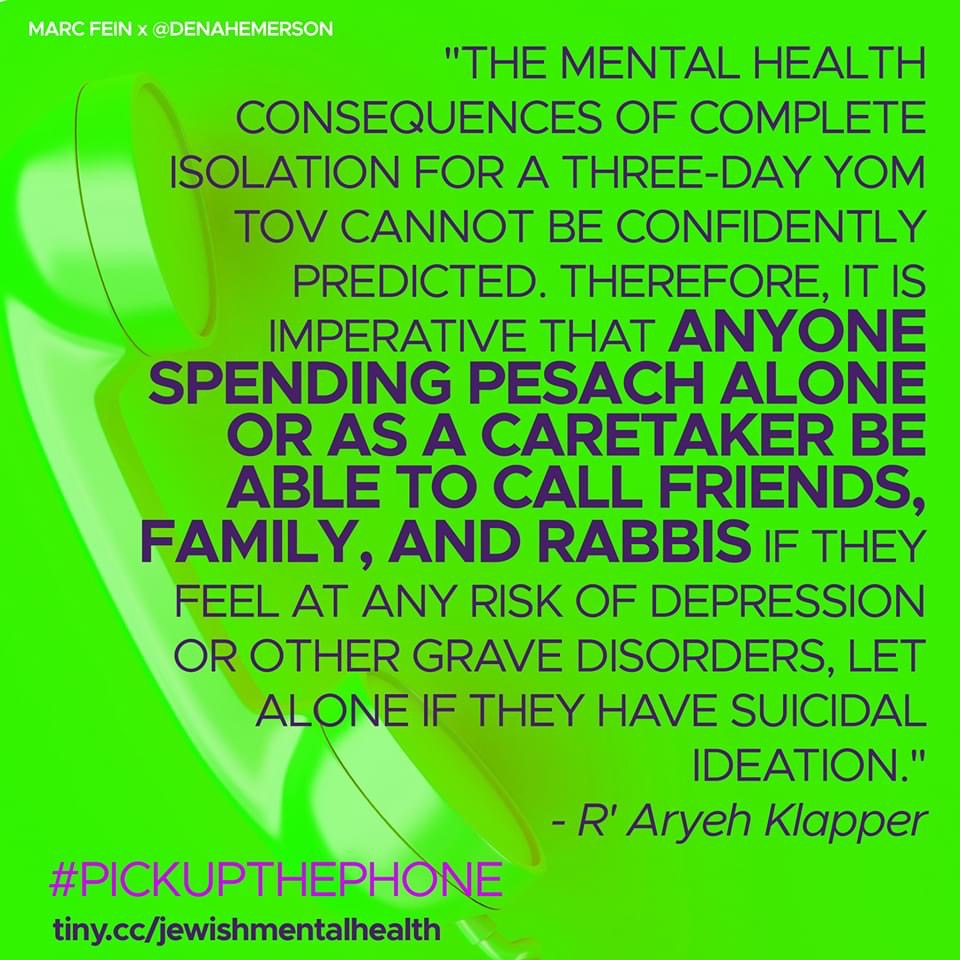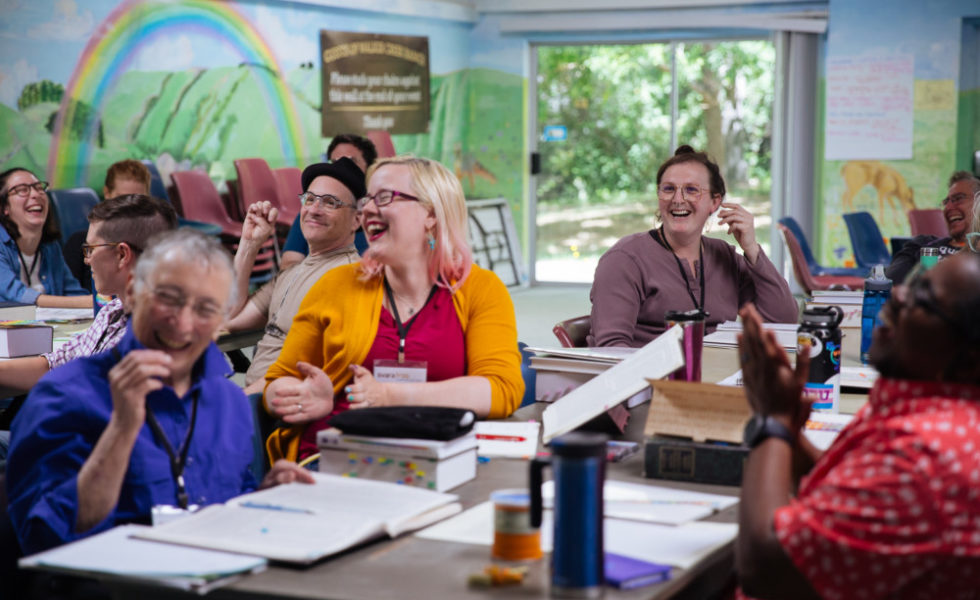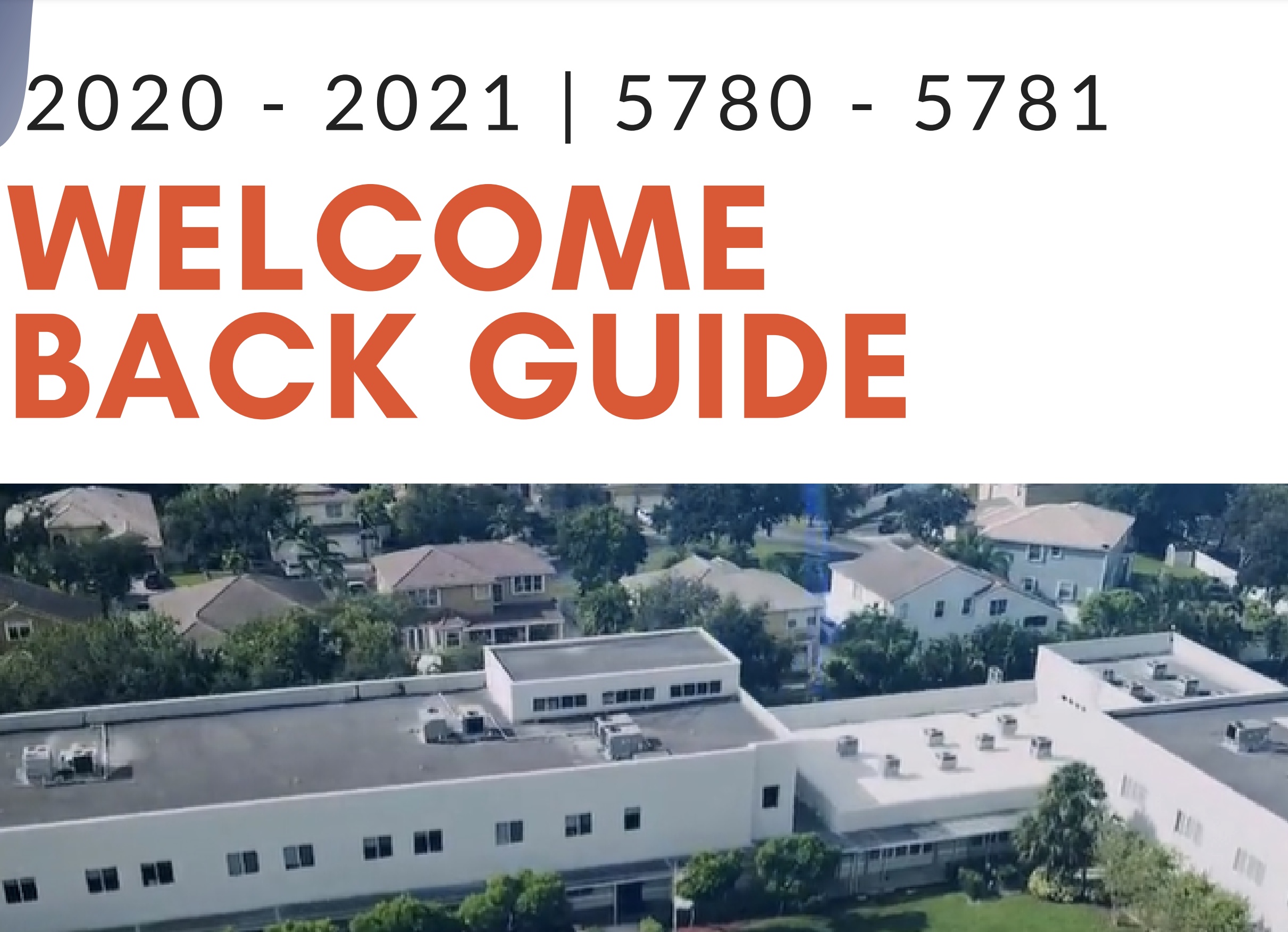The COVID-19 Pandemic and the “Social Model” of Disability
Sarah Imhoff

“Would any alternative calendars work?” How do we build community “without leaving the building”? How will this plan affect people’s mental health? Will everyone who needs this have access? Accommodation, Flexibility, Adjustments. These questions and words sound familiar to anyone who has discussed education, religious community, or even work during the pandemic. They also sound familiar to anyone who thinks about disability.
In North American Jewish communities, relatively few people used the word “disability” to explain how they saw accommodations and adjustments during the pandemic. But, many people, from rabbis to laypeople, in fact, proceeded with a set of assumptions that look very much like what disability scholars and activists call “the social model” of disability. That is, they ask questions about the norms, requirements, and assumptions about human bodies with the knowledge that bodies are socially constructed. They pay special attention to how our bodies interact with human-created environments. They approach problems as problems with the environment rather than problems with the person. If a wheelchair user could not access part of the synagogue, someone thinking with the social model would ask about what barriers the building presented (maybe it has stairs but no ramp, for example) rather than assuming the problem resided in the body of the wheelchair user.
During the pandemic, many Jewish communal organizations, such as schools, synagogues, and camps, have thought in these same ways. They understand that the problems they face stem from habits, schedules, and ingrained ways of doing things, not from particular people’s bodies. They do all this even though they rarely use the words disability or social model.
One explanation for this resonance might be that American Jewish communities had already begun thinking more about disability before the pandemic, and so they applied the social model of disability when pandemic-related issues arose. It is certainly true that Jewish communal organizations pay more attention to disability than they did decades ago. Some of these are small steps. The Jewish Disability Awareness, Acceptance, and Inclusion Month began in 2009. A 2018 survey found that more than 50% of Jews with disabilities felt that “the Jewish community” was doing “a lot better” or “a little better” at including people with disabilities than they had 5 years ago.

Did increased awareness of disabilities drive the way people thought about pandemic-related changes? If that were true, we would expect to see more acknowledgment of disability in their discussions about those changes. Yet few communications mention it. When people do mention disability, it sometimes appears as part of a list. Here is an example from Benay Lappe, the founder of the “traditionally radical yeshiva” SVARA, which has both online and in-person communities:
We queer folk–all of us who know the brokenness of our societal systems–poor and working class folks, folks with disabilities, trans folks, People of Color, and so many of us on the margins–we all know a lot about uncertainty, about not knowing what comes next. The economic and societal systems that are crashing right now crashed for us a long time ago. We’ve been in the wilderness. And that’s not to say that the kind of profound uncertainty we’re all feeling is any less traumatizing–if anything, it can be re-traumatizing for us–but we know how to get through it. Because we’ve gotten through it before. As Jews. And as queer folk.
Lappe recognizes that people with disabilities are one group of people who know the feeling of uncertainty well. In that sense, they are vulnerable and accustomed to being let down by social systems. Yet disability appears as one of several experiences; Lappe does not hold disability up as a distinctively valuable way of thinking about responses to the pandemic, nor does she make any explicit connections to a social model of understanding disability.
In fact, very few people within Jewish communities make such connections. It seems unlikely, then, that similarities between the social model of disability and American Jewish ways of discussing communal responses to the pandemic are a result of widespread adoption of that model.
In short, modes of thinking associated with disability have become far more common, even when the people using them may not even know they are doing this. The materials in the “Collecting These Times” and “American Jewish Life” collections come from Jewish communities across the United States and Canada, as well as from across the spectrum of Jewish observance. They speak about the pandemic in different ways and sometimes from different political positions. Overall, few speak directly about disability, and those that do, speak mainly about special accommodations for people with disabilities. But many speak about adapting current practices, changing physical spaces, adjusting schedules, and becoming flexible about time in ways that would sound very familiar to those who think about disability.
Take, for example, the conversation about whether and how to use Zoom for Shabbat services. Starting up a computer and opening Zoom on Shabbat or a holiday would violate halakhic prohibitions. But gathering together closely in the synagogue would put people’s health and perhaps lives at risk, which would also violate the halakhic principle that saving a life outranks other commandments. Different denominations, such as Reform, Reconstructionist, Conservative, and Orthodox, have different orientations to halakhah, and even within these denominations, both leaders and synagogue members had a variety of opinions backed up with a variety of reasons.
Yet for the most part, they had something in common: Most of the conversations about Zoom on Shabbat—whether official proclamations or personal communication—primarily treated the issue as one that does not reside in the individual body (say, the elderly woman who can’t come to services) but rather in the relationship between person, community, and technology. Some found ways to use Zoom creatively to accommodate Jews who would otherwise be alone or those who are immunocompromised and could not attend even when others returned. People saw the crux of the issue as the religious services, how they were performed, and how they were made available—not the individuals who had particular needs.
The Conservative Movement issued a 34-page responsum, or halakhic ruling, on whether a person could use streaming services on Shabbat and holidays. In many places, the reasoning follows social models of disability—so much so that there are several cases where the explanation in fact relies on previous rulings about people with disabilities. The responsum discusses “modes of interaction with electronics that would be problematic under normal circumstances, with possible exceptions or loopholes that could [be] used under particularly unusual or pressing circumstances” such as “the current crisis.” The author, Rabbi Joshua Heller, then drew on past rulings about technology that explicitly consider people with disabilities.
Many home devices can be controlled through voice-activated assistants. In his paper on artificial intelligence, Rabbi Nevins considers the possibility that interacting with a device through such an assistant would be conceptually different from interacting by typing, swiping or clicking, which are either toledat koteiv [akin to writing, which is prohibited] or shvut [activities which also violate the spirit of the Sabbath]… However, in a case of true need (a person with an illness or a disability which affects their dignity), the use of a voice-activated system to turn on a stream would clearly be permitted. Doing so for a person who is well might technically be permitted but would be discouraged.
Typically, this responsum draws on past responsa to argue for its point. Though Heller summarizes the earlier responsum on artificial intelligence, the point about a person with a disability is his own addition. In general, he suggests, the current crisis should make everyone reevaluate “modes of interaction” between humans and technology.
When discussing whether a person can use headphones, Heller likewise draws on established and well-known rulings about the permissibility of hearing aids for people who are hard of hearing.
The use of headphones or headphone/microphone headsets, when practical, might also be helpful for several reasons. First of all, the sound coming from the headphones is not audible even to others nearby, reducing the issue of hashma’at kol [making a noise that many people hear on Shabbat], whether the stream is activated on Shabbat or beforehand. Any sound created becomes more functionally similar to the case of a hearing aid, which is universally permitted.
In both of these examples, Heller uses halakhah about disability to reason through what should apply to everyone in the community during the pandemic. Using Zoom may be like interacting with a voice-activated assistant; headphones may be like hearing aids. These existing examples also recognize that people’s abilities (and disabilities) do not reside in their bodies alone; they are a product of people’s interactions with their environments.
In addition to questions raised about technology, the pandemic made people reconsider everyday practices about health and eating. Rabbi Hershel Schachter, an influential figure in US Orthodoxy, answered a question about whether taking vitamins that contain certain ingredients might be acceptable given the need to support one’s immune system. Halakhically observant Jews wondered whether they could take vitamins and medication that might be made with kitniyos, legumes or other small foods that are traditionally prohibited for Ashkenazim during Passover. Schachter’s response begins with commentary on a similar question for a person who has Crohn’s disease and would drink milk fortified with kitniyos. “The custom of Ashkenazim to refrain from eating kitniyos,” he explains, “is suspended for an individual who is slightly ill.” Likewise, for all people during the pandemic, “these vitamins and medications, containing kitniyos, can be taken prophylactically, as a preventative measure, even before the individual feels ill.” Schachter uses the logic from the case of Crohn’s disease to reason through what is acceptable for others, even those without any chronic illness.

Beyond physical health, Jewish schools, camps, and synagogues also attended to issues of mental health. Their approaches demonstrate that they also saw mental health as a product of the relationship of the person to the environment, not just an issue that was interior to the person. Conservative responsum on streaming services on Shabbat also acknowledged that “over the three day Yom Tov [holiday] of Passover 5780, many Rabbis who would normally forbid telephone use on Shabbat or Yom Tov permitted it so that people who lived alone not be isolated. While many people can manage 24 hours without human contact, having that happen every week would cause “a greater degree of distress.” A hotline aimed at Orthodox Jews similarly encouraged people to #PickUpThePhone during Passover if they are “at risk of depression or other grave disorders,” because “the mental health consequences of complete isolation for a three-day yom tov [holiday]” could be devastating. Even though halakhah prohibits using the phone during the holiday, mental health problems override that prohibition. Notably, the hotline ad located the issue in the circumstances—a three-day holiday that could isolate people—rather than in the individuals who lived alone or struggled with depression. Schools and youth organizations acknowledged that online learning would affect children’s and teens’ mental health, and presented the issue as one of the structure rather than a problem interior to the children.
Some people even narrated their own daily experiences with language that resonates with the ways people with disabilities tell their stories. One non-disabled woman observed that during the pandemic, time works differently: “I was reminded of all the beauty that remained despite—and because of—having to stay home… Instead of our daily sprint to the bus stop, we take leisurely morning walks.” Some disability activists call their different experience of time “crip time.” In a 2014 interview, the rabbi and scholar Julia Watts Belser explained her own experience of crip time in a way that would sound right at home in many people’s reflections on the pandemic:
[I try not to] think of waiting time as wasted time, but really as an opportunity to pay attention to where I am, to how I feel, to what’s going on, to really the sense that like, this moment can be, can be a really potent moment. Where ever it is you know. I can’t actually make it happen faster, so, as much as often I would like to, right? What I can do sometimes is to transform the way I am experiencing the waiting.
Disability studies can help make sense of what was happening when non-disabled people observed how the pandemic made time feel different, even in embodied ways.
During the pandemic, almost all of us had to experience and consider things that many people with disabilities encounter in their everyday lives. One expert in disability, neurodiversity, and employment recently argued that this means we are all disabled now:
The current environment is leading to disability accommodations becoming widely available, not because of some ethical awakening or increased empathy but because now everyone is disabled. If we follow the logic of the social model of disability, we are now working in an environment that is not ideal for the vast majority rather than an unseen minority.
But this position obscures something important: the pandemic has hurt people with disabilities disproportionately. Many people with disabilities also require accommodations that differ from their able-bodied friends and neighbors. Although the social model of disability certainly holds insights for everyone, there are still substantive differences between the experiences of people with disabilities and those without.
Thinking with the social model of disability—or, as many of these Jewish communities did, thinking akin to the social model of disability, even if they do not realize it—meant imagining different possibilities for accommodation and inclusion during the pandemic. It did not create a utopia for disabled people. But the insights of disability studies can help us imagine new possibilities, and perhaps create patterns of thought for the future.
Return to Main Page